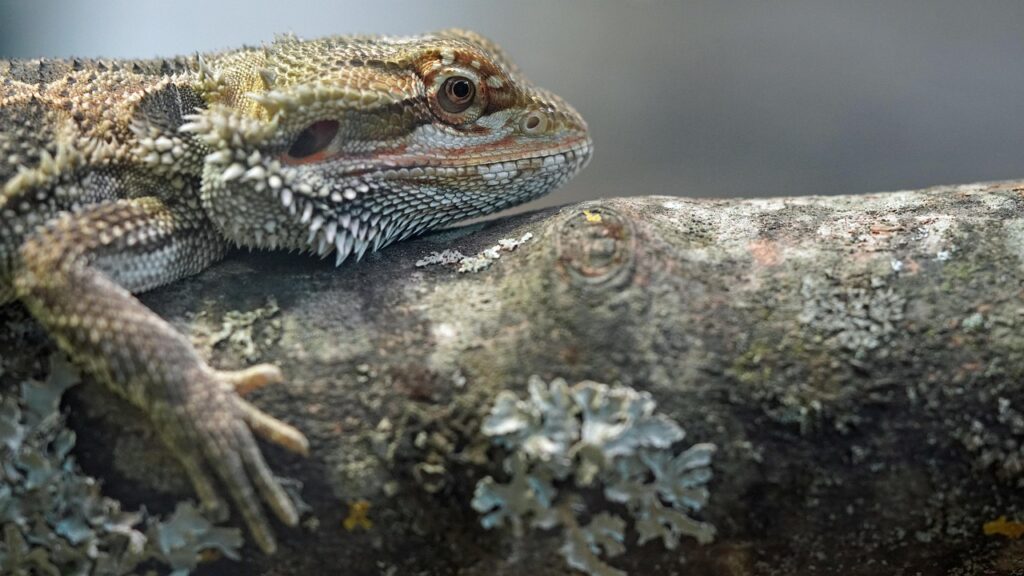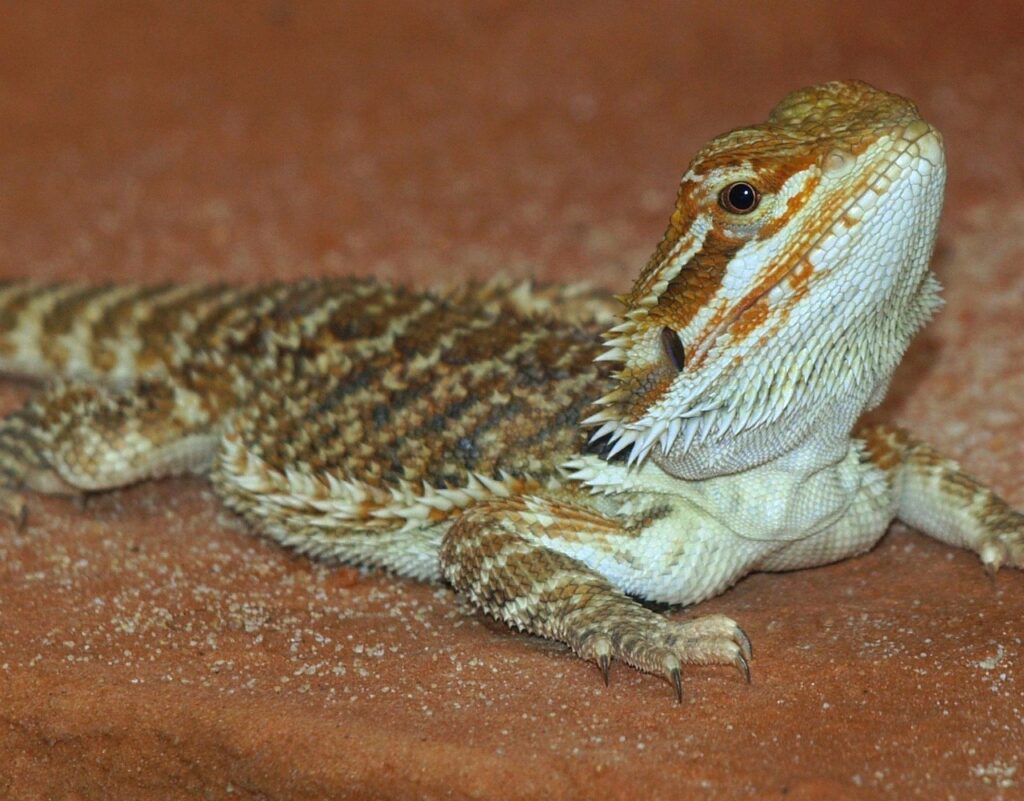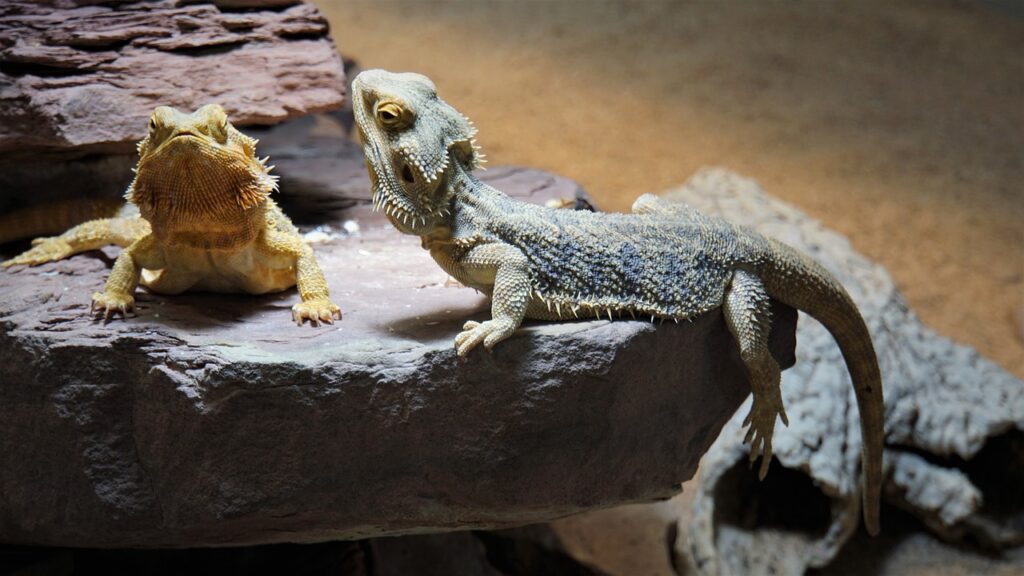A bearded dragon might worry its owner if it looks motionless. It’s important to know the signs that could show if your pet is actually dead. Check for breathing or movement. If the bearded dragon is not showing any of these signs, it might be a cause for concern.

Other symptoms to look for include unresponsiveness and lack of reflexes. Gently touch your pet to see if there is any reaction. If your bearded dragon feels cold to the touch and remains limp, it may be an indication that it has passed away.
Examine the bearded dragon’s eyes. Closed, sunken eyes can be a warning sign. Mouth and tongue can also give clues; a grayish or bluish hue might signify death. Being aware of these signs can help you understand the health status of your pet and take appropriate action.
Recognizing the Signs of a Dying Bearded Dragon

A dying bearded dragon shows clear signs through its behavior, physical symptoms, and eating habits. Knowing these signs helps to address health issues promptly.
Unresponsive Behavior and Lack of Movement
An unresponsive bearded dragon is a major cause for concern. If it doesn’t react to touch, sound, or light, this could mean serious health problems. Lethargic or inactive behavior points towards a very sick dragon. Normal bearded dragons are curious and move frequently.
No movement, especially for long periods, can indicate critical conditions. Look for consistent unresponsiveness and lack of energy. If your bearded dragon isn’t just napping or brumating, it might be dying.
Physical Symptoms and Illness
Be aware of physical signs like sunken eyes, dehydration, and wrinkly skin. Sunken eyes often signal severe dehydration. Check for a dry or flaky skin, which can be signs of illness.
Diseases and parasites can lead to noticeable physical symptoms. Look for tail rot or other skin infections. A droopy or injured tail might also indicate failing health. Monitor any abnormal shedding patterns or sores on its body.
Eating and Digestive Irregularities
Loss of appetite is a significant red flag. If your bearded dragon refuses to eat for several days, it could be sick. Lack of appetite can be due to parasites, disease, or stress. Monitor its eating habits closely.
Digestive issues are also common when a bearded dragon is dying. Look for signs like diarrhea, constipation, or undigested food in its stool. These can indicate internal problems. Consistent eating and digestive irregularities are serious and need immediate attention.
Understanding Brumation and Dormancy

Brumation and dormancy can be confusing, as they can look similar to signs of illness or death. Recognizing the differences and knowing how to care for a bearded dragon during brumation is essential.
Differences Between Brumation Symptoms and Death
Brumation is somewhat like hibernation in other animals. A bearded dragon during brumation will be less active, may sleep a lot, and could eat very little or not at all. They might seem lethargic but will still respond to touch and will have a steady, if slow, breathing pattern.
Signs of death are different. A dead bearded dragon will not respond to touch, have no breathing or movement, and often their body will become stiff and cold. If unsure, it’s always best to consult a vet.
How to Support Healthy Brumation
To help a bearded dragon during brumation, check that their habitat has the right temperature and darkness. Room temperature around 60-70°F and a dark space can encourage brumation naturally. Offer fresh water even if they aren’t eating, as hydration is still important.
Avoid excessive handling to let them rest peacefully. It’s also helpful to keep the habitat clean to prevent any health issues. Regularly check on them to ensure they are okay but minimize disturbances.
When to Be Concerned During Brumation
While brumation is normal, some signs could indicate problems. If there is a drastic weight loss, signs of dehydration, or any unusual symptoms, it’s important to take them to a vet. Prolonged periods without response or changes in physical appearance can also be concerning.
Monitor their condition closely to spot any potential problems early. It’s better to be cautious and seek professional advice if anything seems off. This will ensure your bearded dragon’s health and safety during the brumation period.
Critical Care Considerations
When a bearded dragon shows signs of severe illness or appears lifeless, immediate action is necessary to ensure their well-being. Understanding when to seek veterinary attention, creating a suitable habitat, and providing proper diet and nutrition are crucial steps.
Assessing the Need for Veterinary Attention
If a bearded dragon exhibits unusual behavior, lethargy, or a lack of response, it’s essential to contact a veterinarian. Symptoms like sunken eyes, rapid weight loss, or difficulty breathing need urgent care.
A veterinarian can diagnose problems such as metabolic bone disease and prescribe treatments. Quick intervention can make a significant difference in the outcome for your pet.
Creating an Optimal Living Environment
The habitat of a bearded dragon plays a critical role in its health. Ensure the habitat has proper lighting, temperature, and substrate. UVB lights are vital for calcium absorption and preventing metabolic bone disease.
Maintain a temperature gradient with a basking spot around 105°F and cooler areas around 85°F. Use safe substrate like reptile carpet or paper towels to avoid impaction.
Diet and Nutrition for a Sick Bearded Dragon
A balanced diet is essential, especially for a sick bearded dragon. Offer a mix of insects like crickets and mealworms, and leafy greens. Hydration is crucial; misting and providing fresh water can prevent dehydration.
Include calcium supplements to support bone health. Monitor the bearded dragon’s eating habits closely and adjust as needed based on the vet’s recommendations.
Final Arrangements after Confirmation
Once you have confirmed that your bearded dragon has passed away, you need to handle the deceased pet properly and decide between burial or cremation. Both options require careful thought and respect for your pet’s remains.
Confirming Death and Handling the Deceased Pet
First, check for signs like no breathing and a lack of movement. Bearded dragons can sometimes appear dead due to their low metabolism, so double-check before making a final decision.
Wear gloves when handling the body to ensure cleanliness and safety. Place the deceased pet in a box or container. Make sure the container is secure and lined with a soft cloth or paper towels.
Deciding on Burial or Cremation
For burials, pick a safe location away from water sources. Dig a hole deep enough to prevent disturbances from other animals, usually around three feet. Place the bearded dragon in a biodegradable container and cover it with soil.
If you choose cremation, you have two options: personal or professional services. Home cremation kits are available, but professional services ensure proper handling and legal compliance. Contact a vet or pet crematorium to make arrangements.
Respect the dead by giving thought to the process, and remember the bond you shared with your pet.
